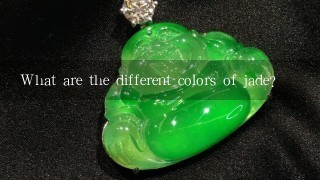What are the different colors of jade?

Jade is a type of rock that is formed when the remains of plants and animals are trapped in a layer of sediment over millions of years. The color of jade can vary depending on the type of mineral, the amount of impurities, and the environment in which it was formed.
The different colors of jade are:
- Green - The most common color of jade, green jade is a type of jade that is formed from the recrystallization of silica in a volcanic rock. Green jade is typically a deep, rich green color, but it can also be found in a variety of other colors, including olive green, forest green, and jade green.
- Black - Black jade is a type of jade that is formed from the precipitation of silica in a volcanic rock. Black jade is typically a deep, rich black color, but it can also be found in a variety of other colors, including dark brown, jet black, and black jade.
- White - White jade is a type of jade that is formed from the precipitation of silica in a volcanic rock. White jade is typically a light, creamy white color, but it can also be found in a variety of other colors, including cream, ivory, and pearl white.
- Yellow - Yellow jade is a type of jade that is formed from the precipitation of silica in a volcanic rock. Yellow jade is typically a light, creamy yellow color, but it can also be found in a variety of other colors, including pale yellow, golden yellow, and honey yellow.
- Red - Red jade is a type of jade that is formed from the precipitation of silica in a volcanic rock. Red jade is typically a deep, rich red color, but it can also be found in a variety of other colors, including dark red, jet black, and blood red.
Jade is a beautiful and valuable stone that can be used for a variety of purposes, including jewelry, sculpture, and meditation. The different colors of jade are a testament to the beauty of nature and the endless possibilities of this ancient material.

















































